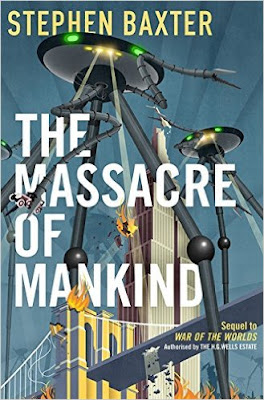The Great Martian War: Invasion
Following the initial Martian invasion on England, President Theodore Roosevelt tries to prepare the United States for the potential of another Martian incursion. As the possibility of another, stronger invasion is increasingly clear; The U.S. government tries to mobilize nations to share information and technology to defend humanity. Newly minted ordinance officer Andrew Comstock has been placed in charge of developing new technology that has to be tested on the fly in a race against time if humanity is to survive.
The Great Martian War: Breakthrough
The second of the three-part series covering the opening salvo of the Great Martian Invasion. US forces recover from the initial shock of the Martian invasion of the South-west and attempt to set-up a defensive line along the Mississippi. The best minds in the US try to come up with ways to defeat the Martians using the little captured technology available to them. Meanwhile, President Roosevelt tries to rally world leaders to aid in stopping the invaders.
These books are based upon the "All Quiet on the MartianFront" game system.
Scott Washburn
A century ago, H. G. Wells raised the possibility of conflict with an alien civilization in the classic and genre-establishing "War of the Worlds." With "The Great Martian War: Invasion," Scott Washburn imagines what happens a decade later, with the Martians adapting to the virus that wiped them out in the Wells novel and the human nations frantically preparing for the return of a technologically superior enemy.Washburn follows the preparations for and the early stages of the second wave of the invasion through the eyes of five characters who range from ordinary civilians up to the White House to a Martian commander. Their paths cross in interesting ways, and we frequently see the same events through different points of view. This becomes a major theme in the book: both humans and Martians learn from the first wave of the invasion, yet remain largely ignorant of the other race's tactics, motives, and technology. One can see a similar dynamic in the human response to the Martian threat, as departments of the American military and nations on the brink of the First World War devolve into tribalism in the face of a truly existential threat.
The true strength of the book is its pacing. Suspense reigns in the first half, as Americans struggle (often unsuccessfully) come to terms with the possibility of a second invasion and, when it comes, to understand Martian strategy. The development of technology is another major theme in the book. The Martians learn from their disastrous first wave, and come to earth determined to avoid the mistakes they made the first time. The historical earth of the early 20th century saw an arms race fueled by nationalism, and with the potential for Martian conflict, that race escalates even further, with the introduction of steam tanks and a Tesla electrical cannon. However, Washburn does not get bogged down in the details of engineering, and the machines never obscure the human (and Martian) elements of the story.



